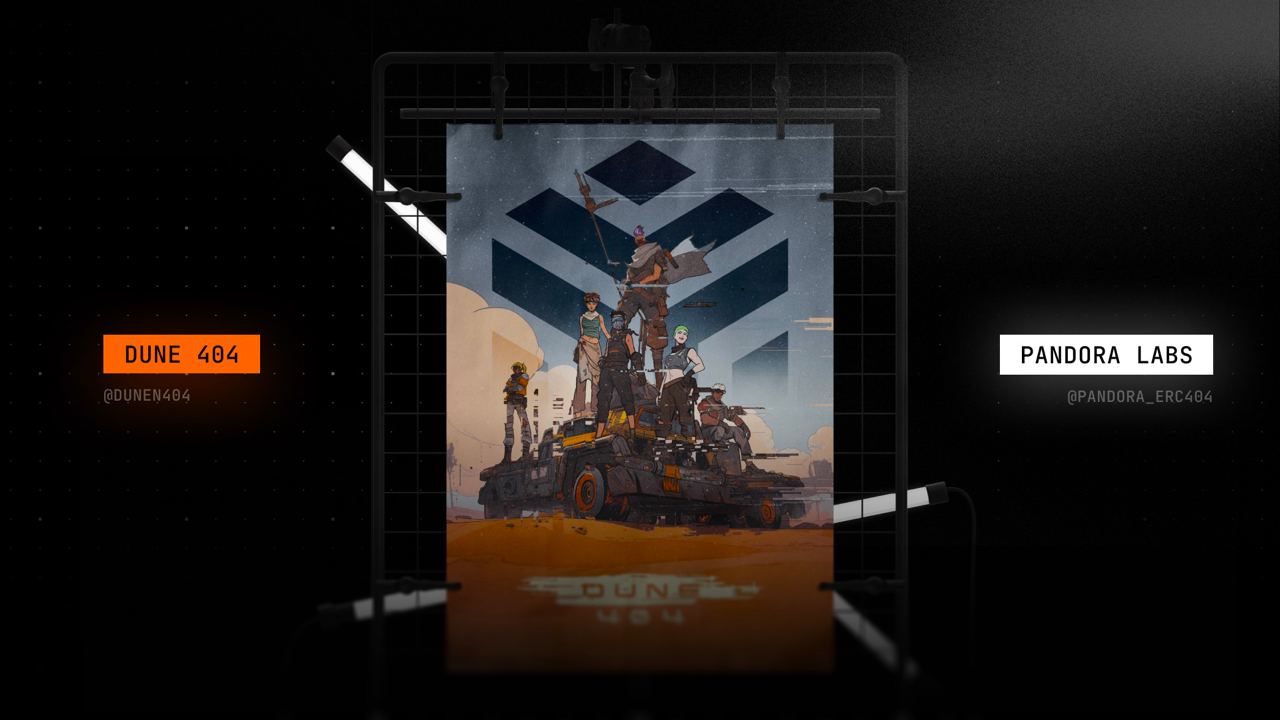ERC-404 is an experimental token standard introduced to the Ethereum ecosystem, expanding beyond the traditional ERC-20 and ERC-721 standards. This unofficial token standard on the Ethereum blockchain explores the concept of semi-fungible tokens, allowing for fractional ownership of assets like NFTs.
The developer community within the Ethereum ecosystem is diving deep into ERC-404 projects, looking to leverage its unique features. One of the main draws of ERC-404 tokens is their ability to represent both whole and fractional ownership of NFT collections, catering to the growing demand for such capabilities in the NFT space.
Due to the experimental nature of ERC-404, it is not yet widely adopted, but many are exploring the possibilities it presents for the future of tokenization on Ethereum.
With its focus on semi-fungible tokens and fractional ownership, ERC-404 could potentially revolutionize the way assets are represented and traded within the Ethereum ecosystem.
As developers continue to work on ERC-404 projects, it will be interesting to see how this token standard evolves and how it could potentially complement existing standards like ERC-20 and ERC-721 token.

How Does ERC-404 Work?
ERC-404 is a new token standard on Ethereum that introduces a unique approach to NFTs. While ERC-20 tokens and ERC-721 focus on fungible and non-fungible tokens respectively, ERC-404 allows for fractional ownership of NFTs within a single token standard.
This experimental standard enables the creation of ERC-404 tokens that represent a whole token, allowing for the defragmentation of the NFT market.
When an NFT is sold, the NFT is burned within the token, and a new NFT is minted to represent the buyer’s ownership. The nature of ERC-404 tokens also provides accessibility in the NFT space, bridging the gap between fungible tokens and NFTs.
One of the key features of ERC-20 tokens is their interoperability, allowing for seamless integration with different platforms and wallets. By adopting the ERC-404 token standard, users can experience a full token experience while exploring the world of NFTs.
The introduction of ERC-404 opens up new possibilities for the Ethereum ecosystem, creating a more dynamic and diverse market for digital assets. In a deep dive into ERC-404, users can explore the mechanics of how ERC-404 tokens work and the benefits they bring to the NFT market.
Picture this: ERC-404 operates by intricately linking each fungible token to a corresponding NFT. Let’s break it down – a project can introduce 100 tokens and 100 NFTs, establishing a one-to-one relationship. When a user purchases a fraction of a token, the related NFT undergoes the burning process, and voila, they possess a fraction of the token. And here’s the kicker – combining token fractions results in the minting of a brand new NFT right into the buyer’s wallet.
Pros and Cons of ERC-404
ERC-404 has emerged as a novel ethereum token standard that merges the features of both fungible tokens and ERC-721 unique NFTs. ERC-404 introduces the concept of fractions of an NFT, allowing users to own a share of an NFT without having to purchase the complete ERC-404 token. This provides added liquidity to the NFT market and opens up new possibilities for token issuance. However, the security of ERC-404 is still a concern, as it is linked to an NFT that may be vulnerable to hacks or breaches. Additionally, ERC-404 offers a way to defrost tokens if a token representing an NFT is sold or transferred.
On the other hand, ERC-404 presents a unique opportunity for users to own a share of an NFT without having to commit to the full purchase. This can be beneficial for those who want to diversify their investments in the ERC-404 space, but may not have the resources to buy an entire NFT. In terms of token standard development, ERC-404 carries the potential to revolutionize the way NFTs are bought, sold, and traded. However, there are still limitations to consider, such as the complexity of managing ownership of an NFT that is split among multiple holders within the ERC-404 ecosystem.
Now, let’s weigh the pros and cons of this intriguing token standard:
Pros:
Liquidity: ERC-404 sets out to tackle the age-old liquidity dilemma faced by NFTs, introducing a streamlined buying and selling process.
Fractionalization: Embracing ERC-404 brings forth native fractionalization of NFTs, promising users a superior and more engaging experience. Increased accessibility: By allowing NFTs to be divided into smaller units, ERC-404 makes these digital assets more accessible to a wider range of investors who may not have the means to purchase a full NFT.
Diversification: Fractionalization allows for the creation of diverse portfolios of NFTs, giving investors the ability to spread risk and potentially increase returns.
Lower entry barriers: ERC-404 lowers the barrier to entry for potential NFT investors, as they can now invest smaller amounts of capital in a wider range of assets.
Cons:
Unaudited: It’s worth noting that ERC-404 is currently unaudited. This implies potential vulnerabilities that could pose risks to users, emphasizing the importance of cautious exploration.
Complexity: The concept of fractionalizing NFTs may be confusing for some users, potentially leading to mistakes or misunderstandings in the buying and selling process.
Regulatory concerns: The fractionalization of NFTs may raise regulatory concerns, particularly around ownership rights and asset management.
Decreased exclusivity: The ability to fractionalize NFTs may diminish the sense of exclusivity and rarity that has historically been associated with these digital assets.
Projects and Adoption
The pioneer in adopting the ERC-404 standard goes by the name Pandora. This trailblazing project has unleashed 10,000 NFTs known as Replicants, intricately tied to an equivalent number of Pandora tokens. These NFTs, boasting varying levels of rarity, can be minted or burned based on token transactions, introducing a new dimension to the world of digital assets.

Excitingly, numerous projects are dipping their toes into the ERC-404 waters. Peopods Finance, for instance, has seamlessly integrated the Pandora token for yield generation. Teller is leveraging it as collateral for loans, while Wasabi Protocol has boldly listed it for perpetual trading.
Conclusion
In conclusion, the ERC-404 token standard emerges as a beacon of innovation, bridging the gap between fungible and non-fungible tokens while aiming to revolutionize NFT liquidity. As the crypto community eagerly watches, it’s evident that ERC-404 is poised to reshape the landscape of digital assets.







